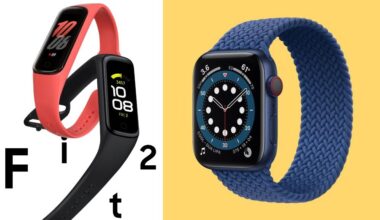College life has so many demands: long lectures, writing papers, online classes, coding, editing media content, and balancing study time with entertainment. In 2025, you don’t need to spend a fortune to get a laptop that handles all that and more. With advances in processors, solid-state storage, and battery efficiency, many affordable laptops now offer premium features.
If you’re a student looking for great performance without breaking the bank, this guide will help you figure out what to look for—and show you some of the top choices right now.
What Students Should Prioritize in 2025
Here are key features that really matter for a student’s laptop:
| Spec | Why It’s Important |
|---|---|
| Processor (CPU): Intel Core i5 (13th gen+), AMD Ryzen 5 (7000 series+), or Apple M-series | These deliver enough power for multitasking, video streaming, light programming, and maybe some design work. |
| RAM: Minimum 8 GB; 16 GB if you can swing it | Prevents slowdowns when you have many browser tabs, apps, etc. |
| Storage: SSD, ideally 256 GB+ | SSDs mean faster boot-up, faster file access. 256 GB gives space for school projects and media without being too pricey. |
| Display: 13-15.6 inch Full HD (1920×1080) or better; higher brightness or OLED if possible | Helps with long reading, visibility, and comfort—especially outdoors or in bright lecture halls. |
| Battery Life: 7-10 hours (real world) or more | You don’t want your laptop to dying in the middle of a lecture or library session. |
| Portability & Weight: Under ~1.6-2 kg (≈ 3.5-4.5 lbs) for laptops you’ll carry daily | Every gram matters when it’s in your backpack thick with books. |
| Build & Durability: Solid keyboard, good hinge, decent thermal performance | You’ll be opening, closing, and transporting it often—durability matters. |
Top Affordable Student Laptops in 2025
Here are some of the best laptops right now that balance performance and price. These are great starting points; depending on deals, discounts, or used/refurbished options, you may find them even cheaper.
| Model | Good For… | Key Specs | Approx. Price* |
|---|---|---|---|
| Acer Aspire 5 (2025 model) | All-around student use: writing, browsing, streaming | Ryzen 5 7530U, 8 GB RAM, 512 GB SSD, 15.6″ FHD display | ~$480–$550 |
| Lenovo IdeaPad Slim 5 | Students who want speed and moderate performance | Ryzen-5 (or Intel equivalent), 16 GB RAM, 512 GB SSD, 14″ or 15.6″ FHD screen | ~$600–$650 range, depending on configuration |
| HP Pavilion Aero 13 | Ultra-portability, for students always on the go | Lightweight design (< ~1 kg), good RAM & SSD, balanced for performance and mobility | ~$550-$650 depending on configuration |
| Apple MacBook Air (M3) | For those preferring macOS, creators/design students, or heavy note-takers | Apple’s M3 chip, great battery life, silent fanless design, and top build quality | ~$999 new, or lower if refurbished/student discount |
| ASUS Vivobook Go 15 (2025) | Students who want a larger screen for split windows or media | 15.6″ FHD display, Ryzen 3/5, 8 GB RAM, 256-512 GB SSD | ~ $420-$550 depending on variant |
| Microsoft Surface Laptop Go 3 | Sleek design, light, premium feel; good for typing and portability | 12.4″ touch display, 8 GB RAM, 256 GB SSD, good battery for light tasks | Around $599 in many markets |
| Lenovo IdeaPad Slim 3 / Slim 3x | Budget pick with extra battery life | Some Slim 3x models offer extended battery life, decent build, and enough performance for schoolwork. | ~$450-$550 depending on specs |
Prices are approximate and depend on sales, country, configuration, and whether they are new or refurbished.
Pros & Trade-Offs
Even the best budget student laptops have trade-offs. Here’s what you gain and what you might compromise:
What You Get
-
Good multitasking for school tasks (Word/Docs, browser tabs, Zoom, basic spreadsheets)
-
Lightweight and portable for daily carrying
-
Decent battery life for lectures & study sessions
-
SSD storage, which makes booting fast and reduces lag when opening apps
What You May Lose
-
Display quality might not match premium models: lower brightness, fewer color-accurate panels
-
Build quality is sometimes compromised: more plastic, thinner cooling, fewer ports.
-
Less headroom for very heavy tasks (e.g., high-end gaming, 4K video editing, large CAD, or 3D rendering)
-
RAM and storage might be minimal initially; upgrading can be limited in some models.
Tips to Stretch Your Budget
-
Student discounts/educational deals—Many brands offer special pricing for students.
-
Buy refurbished – Refurbished or open-box units with a warranty can give premium specs at a lower price.
-
Watch for sales—back-to-school, seasonal discounts, and Black Friday often have sweet deals.
-
Prioritize the specs that matter to you—if you mostly write and browse, RAM & battery are more important; if you edit media, storage/screen/color accuracy matter.
-
Check upgradeability—if the laptop allows adding more RAM or swapping SSD later, you can save upfront and improve later.
Which Laptop Should You Choose?
Here are suggestions based on different student profiles:
| Student Type | Best Fit |
|---|---|
| On a tight budget (e.g., just for writing, browsing) | Acer Aspire 5, Vivobook Go 15, or Slim 3 |
| Mobile student/commuter a lot | HP Pavilion Aero 13, Surface Laptop Go 3 |
| Creative or design use | MacBook Air M3, IdeaPad Slim 5 |
| Value and power mix | Lenovo IdeaPad Slim 5 with 16 GB RAM, Aspire 5 with a larger SSD |
Conclusion
In 2025, students don’t need to pay flagship prices to get laptops that are fast, reliable, and capable. With smart choices around CPU, RAM, SSD storage, and portability, you can get a laptop that feels premium without stretching your wallet too much.
Pick what matters most—battery, display, or power—and you’ll find a laptop that supports your studies, creativity, and life. Make sure to check deals in your region (Nigeria) too, since import costs or local taxes can affect the price heavily.








